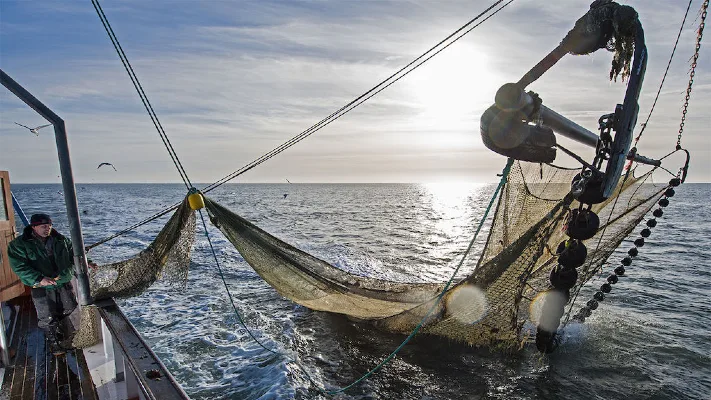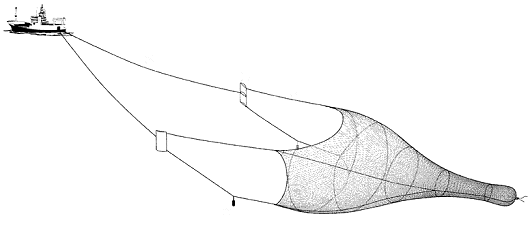A shocking report, released January 22 by Fisheries and Oceans Canada, revealed a staggering fact: nearly 30,000 chinook salmon, the crown jewels of the Pacific, were killed, ensnared in commercial trawl fishing nets. The trawlers aim primarily at harvesting hake and walleye pollock off the coast of British Columbia.
The 2022-23 groundfish fishing season witnessed the highest bycatch, or unintended catch, on record, a grim statistic that demonstrates the pressing need for sustainable fishing practices.
The chinook salmon, revered as the king among its kind for its size and culinary value, constituted 93% of the accidental catch. These fish, critical to the diet of the endangered southern resident orcas, were caught in a devastating blow to both conservation efforts and the natural ecosystem.

Sydney Dixon, a marine specialist at Pacific Wild, highlighted the severity of the situation, stating, “It’s a pretty devastating waste of a species that is … a food source for an endangered species in part of Canada and the U.S.” She estimated that 7,700 of these fish came from U.S. waters, which could have fed three or four orcas for an entire year.
The salmon came from a variety of rivers across the region. They were caught in Canadian waters across 847 trawl trips between September 26, 2022, and February 20, 2023. This period marked the first year of an enhanced monitoring effort for salmon bycatch by Canadian authorities.
Dixon praised this monitoring initiative, emphasizing its importance: “We would like to see monitoring for more important species on our coast at a time when it has never been harder to be these species. With climate change, we are in unprecedented times. … I would hope the social license for this kind of waste erodes.”
Counted Bycatch Is Only 15% Of The Horror Show
To fully understand the problem, we need to know the industry terminology. Specifically, what’s included in an observed or counted bycatch, and what isn’t.
Those bycatch numbers are just observed, or counted, bycatch, meaning the number that is physically counted on the vessel. That accounts for only 15 percent of bycatch. Experts estimate that complete trawl bycatch are likely 10 times higher, because trawl regulators don’t factor in subsurface bycatch. That would include all the fish, crab, plants, coral and marine life mowed down by the net that doesn’t make it to the surface to be tallied.
Deborah Giles, from Wild Orca, expressed concern over the impact of this bycatch on the orca population, “That is a lot of fish, a lot of wasted fish that the whales could absolutely utilize, and that is just one fishery in one region.” She stressed the need for fisheries to ensure enough salmon remain in the water to support not just the current orca population but also their future generations.
Specifically, Dr. Giles strongly feels that fisheries must leave enough salmon to feed the 74 living southern resident orcas and enough for a larger population — particularly pregnant mothers. Most orca pregnancies are lost because of lack of food.
Sadly, the most recently born baby orca in the region died after only a month.

The southern resident orcas, listed as an endangered species since 2005, face threats from lack of food, noise pollution, and other environmental challenges. This situation is made worse by the loss of chinook salmon, their primary food source.
In response to the orcas’ plight, NOAA has initiated a program to boost chinook populations through hatchery releases, investing $25 million since 2020. This effort aims to increase the available prey for orcas by releasing millions more hatchery-raised fish. An environmental impact statement by NOAA provided the first estimates of the increase in adult chinook returns, which varied from 0.13% to 8%, depending on the time and place of release.
More To Discover
- Food Giants Win $17.7M Damages in Egg Price Fixing Victory
- Study Shows Killing ‘Outsider’ Animals May Hurt, Not Help, Nature
- Hima Seafood Launches World’s Largest Land-Based Trout Farm in Norway, Pushing Sustainable Aquaculture Forward
- How Media’s Single-Use Mask Bias Contributed to PPE Pollution During The Pandemic
NOAA’s preferred plan is to continue this program until at least 2028, at an annual cost of more than $6 million. Other strategies being considered include reducing fishing activities to conserve more fish for orcas and improving salmon habitats to boost natural populations.
If you’d like to learn more about the devastation of bottom trawling, here’s a two-minute video that won’t be a waste of your time:




















